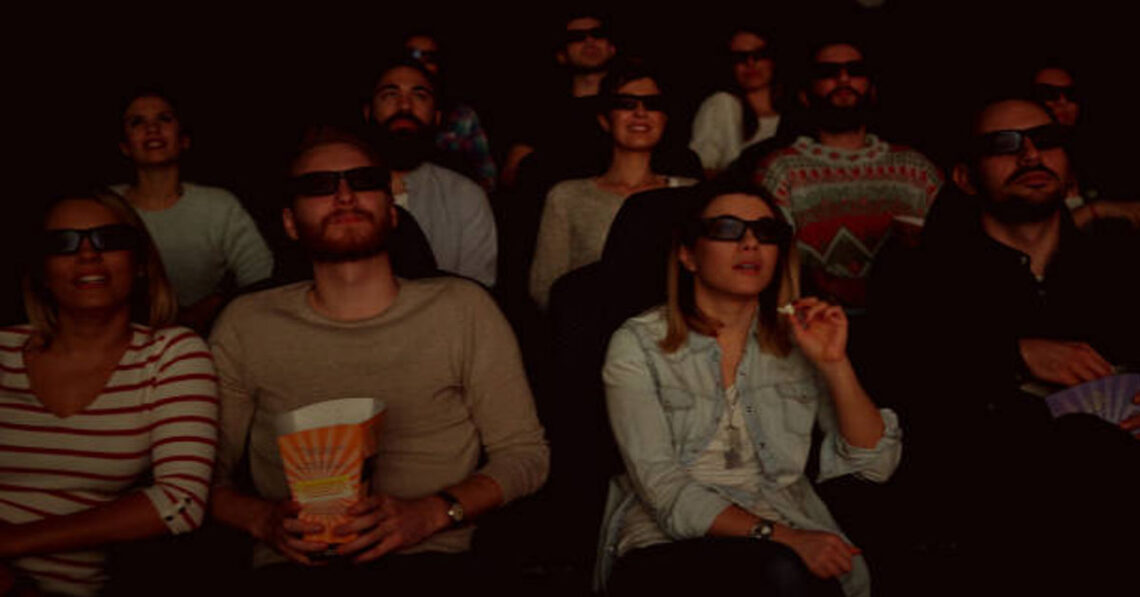Cinema has always been more than just entertainment — it is an art form that expresses emotion, thought, and imagination through light, sound, and motion. Yet within this vast world of film, a particular idea continues to fascinate filmmakers, critics, and philosophers alike: the concept of “Absolute Cinema.”
Unlike mainstream cinema that focuses on storytelling, characters, or commercial appeal, Absolute Cinema represents the essence of film itself — the art of pure visual and auditory experience. It strips away external elements such as dialogue or theatrical performance to reveal the medium’s true expressive potential.
In this article, we will explore the meaning, history, theory, evolution, and impact of Absolute Cinema, and how it continues to influence modern filmmaking.
1. Defining Absolute Cinema
Absolute Cinema refers to a type of filmmaking that emphasizes pure visual composition, rhythm, movement, and emotion, without relying heavily on dialogue, plot, or narrative logic.
In simple terms, it is cinema in its most “absolute” form — meaning it stands alone, self-contained, and self-expressive. The images, editing, lighting, and music themselves carry meaning, rather than words or explanations.
This concept arose from the idea that film is not just a form of recorded theatre or literature, but a unique artistic language — one that communicates directly through the senses.
Key Elements of Absolute Cinema
| Element | Description |
|---|---|
| Visual Purity | Focus on images, movement, and composition rather than dialogue |
| Rhythm & Montage | Use of editing and visual rhythm to evoke emotion |
| Non-Narrative Form | May not follow a conventional story or character arc |
| Emotional Resonance | Relies on sensory impact rather than logical explanation |
| Artistic Independence | Film becomes self-referential — about cinema itself |
Through these characteristics, Absolute Cinema becomes an artistic meditation on the nature of film, often merging beauty, abstraction, and feeling into a singular experience.
2. Historical Origins of the Concept
The term “Absolute Cinema” finds its roots in the early 20th century, particularly within European avant-garde film movements. When cinema was new, many artists and thinkers believed it should develop its own identity — separate from literature, theatre, or photography.
During the 1920s, filmmakers like Hans Richter, Walter Ruttmann, and Viking Eggeling experimented with purely visual films that focused on shapes, colors, and rhythm instead of stories. They called their work “Absolute Film” — a term that eventually evolved into Absolute Cinema.
For instance, Ruttmann’s 1921 film “Opus I” featured abstract moving forms synchronized with music, exploring how images could behave like musical notes. These artists viewed film as visual music, capable of expressing pure emotion through movement and time.
At the same time, film theorists such as Sergei Eisenstein and Dziga Vertov explored montage — the art of editing — as a way to manipulate emotion and thought. While they worked with more narrative elements, their underlying belief was similar: that the power of cinema lay in its own visual language, not borrowed forms of art.
3. Philosophical Meaning of Absolute Cinema
Philosophically, Absolute Cinema is rooted in the idea that cinema is an autonomous art form. That means it doesn’t need to imitate other arts like theatre or literature to be meaningful.
To understand this, imagine a poem written in images rather than words. Each frame, each cut, and each sound is part of a poetic rhythm. The film doesn’t tell a story—it expresses a state of being.
This form of cinema is “absolute” because it does not depend on external references. It exists purely as an aesthetic and emotional experience.
4. The Principles of Absolute Cinema
Absolute Cinema operates under a few key artistic and theoretical principles that distinguish it from traditional filmmaking.
| Principle | Explanation |
|---|---|
| Autonomy | Cinema should express itself without borrowing from other arts. |
| Abstraction | Realistic storytelling gives way to abstract imagery. |
| Sensory Engagement | The goal is to stimulate the senses, not just the intellect. |
| Rhythm as Structure | Editing and pacing replace plot as the organizing force. |
| Universal Emotion | The experience transcends language and cultural barriers. |
Each of these principles underscores the belief that cinema’s greatest strength lies in its visual and emotional universality.
5. Examples and Inspirations of Absolute Cinema
While “Absolute Cinema” is a theoretical concept, certain films throughout history come close to realizing its ideals. These films focus more on feeling and visual rhythm than dialogue or linear storytelling.
| Director | Film Example | Approach |
|---|---|---|
| Stan Brakhage | “Dog Star Man” (1961–64) | Hand-painted film frames and abstract visuals |
| Dziga Vertov | “Man with a Movie Camera” (1929) | Montage exploring the essence of cinema |
| Terrence Malick | “The Tree of Life” (2011) | Visual poetry exploring existence and memory |
| Gaspar Noé | “Enter the Void” (2009) | Subjective, psychedelic cinematography |
| Andrei Tarkovsky | “Mirror” (1975) | Dreamlike structure emphasizing emotion over plot |
These films vary in style and theme, but they all share one goal: to use cinema as pure expression.
6. Visual Language and Symbolism in Absolute Cinema
In Absolute Cinema, the image is everything. The filmmaker communicates emotion, philosophy, or spirituality without relying on dialogue.
This approach requires mastery of visual language — including:
- Light and Shadow: Used symbolically to represent truth, fear, or revelation.
- Color: Each color carries emotional weight — blue may represent memory, red may express passion or danger.
- Motion: The way the camera moves or an object shifts on screen creates rhythm and emotional tone.
- Composition: Every frame is constructed like a painting, guiding the viewer’s subconscious.
For example, in Tarkovsky’s films, slow camera movement and long takes create a meditative feeling. In contrast, Vertov’s rapid editing generates energy and excitement.
In both cases, emotion emerges not from dialogue, but from visual rhythm and atmosphere — the hallmark of Absolute Cinema.
7. The Role of Sound and Music
Though Absolute Cinema often minimizes dialogue, it gives great importance to sound and music.
Sound in this context is not just background support — it’s part of the film’s soul. Music, ambient noise, and silence all contribute to emotional depth.
| Sound Element | Function in Absolute Cinema |
|---|---|
| Silence | Creates contemplation and emotional stillness |
| Natural Sounds | Enhances realism without narrative interference |
| Music | Provides rhythm and emotional guidance |
| Experimental Sound | Adds abstraction, turning audio into pure art |
Some filmmakers even use synesthetic effects — blending sound and image to create a unified sensory experience, much like a visual symphony.
8. The Emotional Experience of Absolute Cinema
Watching Absolute Cinema is not about following a story — it’s about feeling. The viewer becomes part of the film’s rhythm, guided by images and sound rather than dialogue or explanation.
It can evoke deep emotions like awe, sadness, confusion, or peace — often all at once. The experience is subjective and personal; no two viewers interpret the same film identically.
This is one reason why Absolute Cinema is often considered a meditative or philosophical experience, inviting the audience to slow down and feel the essence of life, time, and memory.
9. The Influence of Absolute Cinema on Modern Filmmaking
Even though few films are purely “absolute,” many modern filmmakers borrow its techniques to enrich their work.
Examples include:
- Visual symbolism in Christopher Nolan’s films.
- Nonlinear storytelling in Malick’s and Lynch’s work.
- Color-driven emotions in Wong Kar-wai’s films.
These influences show how Absolute Cinema continues to shape visual storytelling — teaching filmmakers that emotion can be conveyed without words, and meaning can arise purely from form.
10. The Viewer’s Role in Absolute Cinema
Unlike conventional films, where the story leads the audience, Absolute Cinema invites the viewer to participate.
Viewers are not passive spectators; they interpret, feel, and construct meaning themselves. The film becomes a mirror — reflecting the viewer’s inner thoughts.
This participatory nature transforms cinema into a dialogue between image and imagination.
11. Absolute Cinema and Time
Time plays a unique role in Absolute Cinema. Instead of moving linearly from beginning to end, time becomes fluid — stretching, looping, or collapsing.
This manipulation of time mirrors how humans experience memory and dreams, making the film’s structure more psychological than chronological.
Directors like Tarkovsky described cinema as “sculpting in time,” which perfectly captures the essence of Absolute Cinema — where the passage of time itself becomes a creative tool.
12. The Artistic Value of Absolute Cinema
The artistic power of Absolute Cinema lies in its purity. It removes distractions and focuses on the fundamental properties of film — image, sound, rhythm, and movement.
| Artistic Focus | Purpose |
|---|---|
| Visual rhythm | Builds emotion and pacing |
| Abstract imagery | Encourages personal interpretation |
| Symbolic color | Adds depth without explanation |
| Silence and pause | Creates space for reflection |
This approach elevates cinema from a form of entertainment to a medium of transcendence — capable of exploring existence itself.
13. Absolute Cinema vs. Realism and Storytelling
Most films rely on realism — believable characters, dialogue, and plots. Absolute Cinema deliberately rejects these conventions to reveal deeper truths.
| Aspect | Absolute Cinema | Traditional Cinema |
|---|---|---|
| Story | Nonlinear or abstract | Structured narrative |
| Characters | Symbolic or minimal | Developed personalities |
| Purpose | Sensory and emotional impact | Entertainment and storytelling |
| Dialogue | Minimal or absent | Central to communication |
| Meaning | Subjective | Explicit or guided |
Through this difference, Absolute Cinema becomes a spiritual exploration, not just a narrative experience.
14. The Challenge and Beauty of Absolute Cinema
Many viewers find Absolute Cinema difficult to understand because it doesn’t follow familiar storytelling patterns. Yet this challenge is also its beauty.
Just like abstract painting or instrumental music, its purpose is to evoke emotion and thought beyond language. It requires patience, openness, and imagination from the audience.
Those who embrace it often describe the experience as transformative — something that lingers long after the film ends.
15. Future of Absolute Cinema in the Digital Age
With modern technology, the possibilities for Absolute Cinema are expanding. Digital filmmaking, VR, and AI open new doors for pure cinematic experiences.
Imagine:
- Virtual reality environments where the viewer floats through visual poetry.
- AI-generated film rhythms that adapt to a viewer’s heartbeat or mood.
- Interactive art installations blending film and live emotion.
These innovations will continue the spirit of Absolute Cinema — using film to explore consciousness, not just tell stories.
16. Why Absolute Cinema Matters Today
In a fast-paced world dominated by short videos and commercial entertainment, Absolute Cinema reminds us of the spiritual and artistic power of silence, slowness, and beauty.
It encourages audiences to feel rather than consume, and filmmakers to create with sincerity rather than formula.
By stripping cinema down to its essence, it rekindles what makes film a profound art form — the ability to move the soul without words.
17. Conclusion
Absolute Cinema is not about spectacle, profit, or even narrative. It is about returning to the roots of what makes cinema unique — its power to move through sight and sound alone.
From the avant-garde experiments of the 1920s to today’s visionary directors, Absolute Cinema continues to inspire those who believe that film can transcend language and touch the infinite.
It stands as a reminder that in the stillness between frames and the rhythm of moving light lies something eternal — a pure form of human expression that speaks directly to the heart.
FAQs about Absolute Cinema
1. What does “Absolute Cinema” mean?
Absolute Cinema refers to filmmaking that emphasizes pure visual and auditory experience without relying on traditional storytelling, dialogue, or realism. It focuses on emotion and abstraction.
2. Who started the concept of Absolute Cinema?
The concept originated from early 20th-century European avant-garde filmmakers like Walter Ruttmann and Hans Richter, who explored cinema as a visual art form independent of theatre or literature.
3. Is Absolute Cinema the same as experimental film?
They overlap, but not entirely. While all Absolute Cinema is experimental, not all experimental films aim for pure visual abstraction. Absolute Cinema focuses on film’s fundamental nature as image and rhythm.
4. Why is Absolute Cinema important?
It challenges conventional filmmaking, inspires creativity, and reminds audiences that cinema is not limited to storytelling—it’s an art form that can express thought and emotion through light and motion alone.
5. Can modern films still achieve Absolute Cinema?
Yes. Modern directors like Terrence Malick, Gaspar Noé, and experimental artists continue to incorporate Absolute Cinema techniques—using imagery, music, and rhythm to create deeply emotional experiences.






